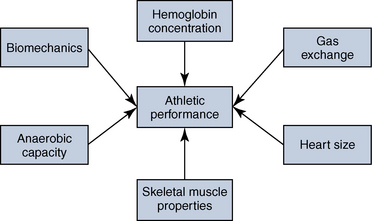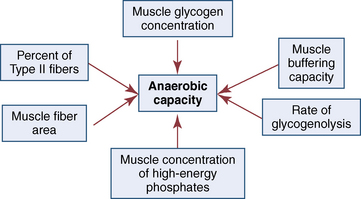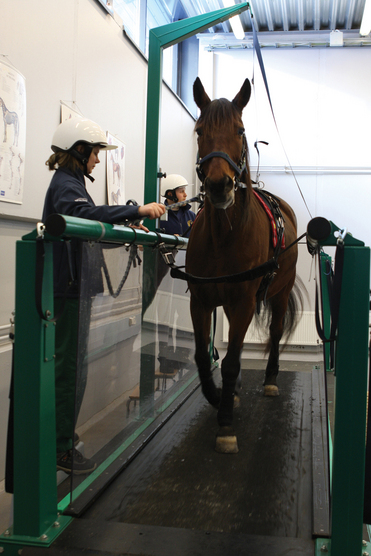CHAPTER 1 The study of equine sports medicine, although now out of its infancy, can only be said to be in its adolescence compared with investigations into human exercise and sports science, which appear to be scaling new heights with ever more sophisticated technologies. Early studies of equine exercise physiology at the end of the nineteenth century (Zuntz, 1898) through until the mid-1930s (Procter, 1934) focused on energy metabolism, with particular relevance to the work horse. The working equid is still used widely in many parts of the world (there are an estimated 100 million across the planet) (Food and Agriculture Organization [FAO], 2009), but increasing mechanization in the Western countries has resulted in the horse being used mainly for recreational purposes, with approximately 16 million used for this purpose (FAO, 2009). Revenue from gambling has been an important driving force in the development of the racing industries in many developed countries. As an extreme example, the Hong Kong Jockey Club holds about 700 races per year with a betting turnover of approximately $US9 billion, that is, approximately $12 million per race. In the 1950s and 1960s, there was an upsurge in interest in the physiology of the athletic horse (Holmes, 1966; Irvine, 1958; Karlsen, 1964; Persson, 1967; Steel, 1960; Steel, 1963); and over the last 20 years, there has been a dramatic acceleration in information that is available from a range of research studies performed around the world. The real pioneer of equine exercise science is Professor Sune Persson, who commenced his studies of the Swedish trotter in the early 1960s. Persson was the first person to use the treadmill to study the physiology of exercise, and the treadmill has gone through a period in which it was widely used for research and on occasion commercial training. Persson’s work has stimulated a range of studies throughout the world examining the science of equine exercise. The widespread interest in the physiology of the athletic horse can be gauged by the response to the regular International Conferences on Equine Exercise Physiology (ICEEP) held every 4 years since the first meeting in 1982 in Oxford, England. Clearly, there is both scientific and commercial interest in factors that contribute to the successful athletic performance of the horse. In contrast to earlier investigations into exercise, which were stimulated by the horse’s role in agriculture, many more horses are used for recreation today, with the range of equestrian activities becoming increasingly diversified. A variety of breeds are involved in an assortment of athletic endeavors, including Thoroughbred, Standardbred, and Quarterhorse racing; endurance riding; dressage; show jumping; eventing; driving events; vaulting; and the rapidly expanding western riding activities: rodeo, polo, polocrosse, and bull fighting. Riders, drivers, trainers, and veterinarians are better informed, and there is acknowledgment that traditional training and feeding methods require investigation. Appropriate changes can be made, and have been made, to such areas as training strategies in light of new information from research studies. However, it must be acknowledged that there is some disillusionment with equine sports medicine with regard to expectations that the principles used in human exercise science could be transposed easily to training the athletic horse. Several popular publications proposed simple recipes for success in training horses, but these regimens had not received scientific investigation, and many methods proposed were time consuming and ultimately produced no improvement in athletic performance or, indeed, increased injury rates (Ivers, 1983; Swan, 1984). There appear to be no easy methods for producing athletic success in horses. However, the extensive information that is now available from various research studies does provide the opportunity for some guidelines for horse owners, trainers, and veterinarians. Superior athletic performance is multifaceted and is the result of integration of the major body systems involved in delivering energy, as well as critical biomechanical factors (Figure 1-1). Although it is clear that physiologic capacity is closely related to athletic performance, it appears almost impossible to define what contributes to that elusive “will to win” that distinguishes the champion horse within an elite group. FIGURE 1-1 Some of the major physiological factors contributing to superior athletic performance in horses. If one compares events as diverse as endurance riding (160 kilometers [km]) and racing (up to 8500 meters [m]), it is clear that there are great differences in energy demands, biomechanical function, thermoregulation, and training strategies. Other athletic activities such as dressage and show jumping focus on biomechanical skills and muscle memory rather than on energy availability. However, in all these activities, an important consideration is the provision of energy from the available reserves, which are chiefly glycogen in the liver and skeletal muscle and fat in various fat depots. Aerobic energy delivery—a function of heart rate, stroke volume, and oxygen extraction by muscle—is the result of a complex chain of events involving the oxygen transport chain (Figure 1-2). In contrast, anaerobic energy delivery is more direct and predominates in the rapid delivery of energy for brief periods of intense exercise (Figure 1-3). A detailed consideration of energy utilization during exercise is provided in Chapter 3. • The selection of horses for specific events prior to the onset of training • Specificity of training for speed versus stamina versus muscle memory • The rate of decrease in fitness following cessation of training • The optimal age to commence training for the discipline the horse will participate in The major problem in training horses for athletic activities is to keep them free of injury. Studies examining racehorses in training have shown that by far the most common reason for wastage is musculoskeletal injury (Evans, 2002; Jeffcott, 1982; Perkins, 2005; Rossdale, 1985). A variety of factors are involved, including the conformation, training surface, age of the horse, and stage of training. However, as yet, few studies have examined the role of training in maximizing the strength of soft tissue and bone. Those studies which have been performed are reviewed in Chapter 13. Fatigue is a complex chain of events, with central as well as peripheral contributions. Short-duration, high-intensity exercise such as is performed in Thoroughbred, Quarterhorse, and Standardbred racing is not limited by availability of substrates but, more likely, by failure of energy production associated with an increase in protons and a decrease in adenosine triphosphate (ATP). In contrast, longer-duration exercise such as endurance riding results in substantial muscle glycogen depletion, which eventually may limit the horse’s capacity to continue to exercise. (See also Chapter 3). In addition, long-distance exercise also imposes substantial thermoregulatory demands, with evaporative cooling from sweat production as the major mechanism for heat dissipation (see Chapter 8). Questions that are open to scientific investigation and worthy of analysis include: • What key physiologic factors determine athletic success in racing horses? • What is the nature of the fatigue experienced by racing horses? • How can race horses be better prepared to resist the onset of fatigue? That is, what are the optimal training methods? • How can we ensure fewer injuries during training and racing? The treadmill allows the investigator to study the athlete during exercise of any intensity as well as at rest before or after exercise. Tests more specific to horses that can be performed on a treadmill include gait analysis, endoscopic evaluation of upper airway function, and tests of exercise performance. It is the last test that has been used most widely for, among others, determining superior athletic ability; explaining poor racing performance in individual horses; identification of possible physiologic factors that may alter with training; and studying the biochemical and physiologic nature of fatigue during exercise (Figure 1-4). Treadmill exercise is not equivalent to track exercise. The effects of air movement, track surface, and rider impact are not duplicated on the treadmill, and horses have no forward momentum on the treadmill because the moving belt provides the driving force. Therefore, the amount of work performed by a horse on the treadmill is quantitatively different from work on the track. For a track exercise test, horses require only a short habituation period and can be worked in their standard manner, often with the usual rider or driver (Sloet van Oldruitenborgh-Oosterbaan and Clayton, 1999). Nevertheless, there are clear advantages to studying responses to exercise on the treadmill. A consistent exercise surface, controlled environmental conditions, precise control over intensity of exercise, and ease of measuring physiologic variables to monitor fitness are all strong indications to pursue treadmill-based studies (Sloet van Oldruitenborgh-Oosterbaan and Clayton, 1999). By positively inclining the treadmill, a horse can be exercised at its maximum power output at a relatively slower speed than if it were on a flat plane (Sexton and Erickson, 1990). This potentially reduces the risk of musculoskeletal injury because speeds above 12 to 13 meters per second (m/s) are unnecessary, but the steeper the slope, the more likely is an adverse impact on normal biomechanical function. It is suggested that muscles may be recruited differently when the horse is exercised on a slope versus a flat plane (Sloet van Oldruitenborgh-Oosterbaan and Barneveld, 1995). A slope of 10% (5.71 degrees) is recommended for treadmill testing, as most horses will reach their maximum oxygen uptake at speeds of 10 to 12 m/s compared with 14 to 15 m/s on a flat plane. It is desirable to standardize the incline that exercise tests are performed on, to allow better comparison between studies from different institutions (Sloet van Oldruitenborgh-Oosterbaan and Clayton, 1999). Significant differences in locomotor and metabolic variables have been reported in studies comparing track exercise with treadmill exercise, and future research may continue to elucidate the etiology of these differences. Currently, treadmill tests are preferable for most research purposes, but track tests may be of greater importance when examining the locomotor variables and fitness of sport horses (Sloet van Oldruitenborgh-Oosterbaan and Clayton, 1999). Thoroughbred racehorses have Cardiac output increases during exercise as a result of an increase in both HR and SV. During exercise, both these responses occur to a greater extent in horses than in humans. For more details see Chapters 3, 9 and 11.
An overview of performance and sports medicine
Equine sports medicine and the athletic horse

Energy demands of exercise and implications for training
Training and musculoskeletal injuries
Limitations to performance
Overview of the application of sports medicine and exercise science in the athletic horse
Aim of scientific investigation
Techniques and instrumentation needed for laboratory research of the athletic species
Treadmill
Respiratory gas analysis and determination of
![]() o2max
o2max
Maximal oxygen consumption
![]() O2max values of 160 to 200 mL O2/kg/min (Noakes, 1992; Rose et al., 1988), more than twice that of elite human athletes on a per kilogram bodyweight basis. The higher
O2max values of 160 to 200 mL O2/kg/min (Noakes, 1992; Rose et al., 1988), more than twice that of elite human athletes on a per kilogram bodyweight basis. The higher ![]() O2max values of the racehorse are best understood in terms of the physiologic factors that determine how rapidly oxygen can be transferred from the air to the active muscles where it is used (see Figure 1-2).
O2max values of the racehorse are best understood in terms of the physiologic factors that determine how rapidly oxygen can be transferred from the air to the active muscles where it is used (see Figure 1-2).
![]()
Stay updated, free articles. Join our Telegram channel

Full access? Get Clinical Tree


An overview of performance and sports medicine
Only gold members can continue reading. Log In or Register to continue





